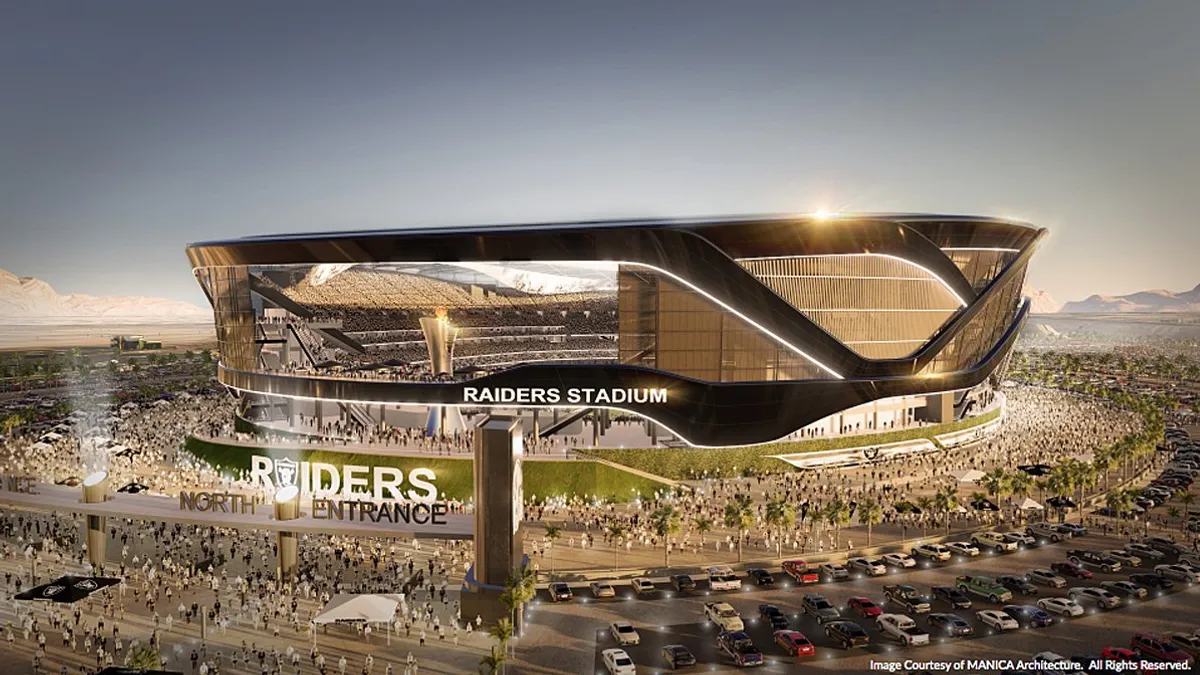Dive Brief:
- The joint venture of Mortenson Construction and McCarthy Building Cos. and the NFL's Oakland Raiders organization have negotiated a $1.8 billion guaranteed maximum price (GMP) for the team's new Las Vegas stadium, $1.39 billion of which will go toward construction costs, according to the Las Vegas Review-Journal.
- The team has already spent $180 million on elements of the project including land, design and engineering ($50 million), construction ($52 million) and fixtures and equipment ($51,402). The Raiders have committed to a total of $850 million in financing, with the state and NFL contributing $750 million and $200 million, respectively. Not included in the contract are several items including the building of the team's $100 million headquarters and training facility in nearby Henderson, Nevada, the cost of temporary facilities, offsite parking and a shuttle system.
- Now that the team and Mortenson-McCarthy have agreed on a GMP, the Raiders can seek final approval from the Las Vegas Stadium Authority. Once that authorization has been given, the Clark County Commission will be able to vote on an ordinance allowing bond sales and start selling them next month. The county said it will use revenue from a dedicated hotel tax to pay off the bonds.
Dive Insight:
At the end of last year, the Raiders struck a deal with Clark County to pay for nearly $1.4 million of infrastructure around the stadium. The team will be responsible for emergency services, traffic control equipment and on-site facilities for the Las Vegas Metro Police. The team will also pay for bridges or underpasses that will allow pedestrian movement between the stadium and the Las Vegas Strip without forcing their interaction with vehicular traffic.
The state, however, will fund the major infrastructure projects that will be necessary to accommodate the increased traffic around the stadium on game day and during special events. The Nevada Department of Transportation (NDOT) said they were planning on doing $900 million of infrastructure work in the area with or without the stadium, so they have reprioritized it and plan to start work earlier than originally planned.
The NDOT will reorganize highway interchanges, direct access ramps and carpool lanes but must complete environmental reviews first. The agency must also still purchase land and wait for funding, which should come available in 2020 or 2021. Since the stadium will open in 2020, Raiders fans, concert goers and other guests will have to put up with traffic jams and then construction slowdowns once the work begins.













